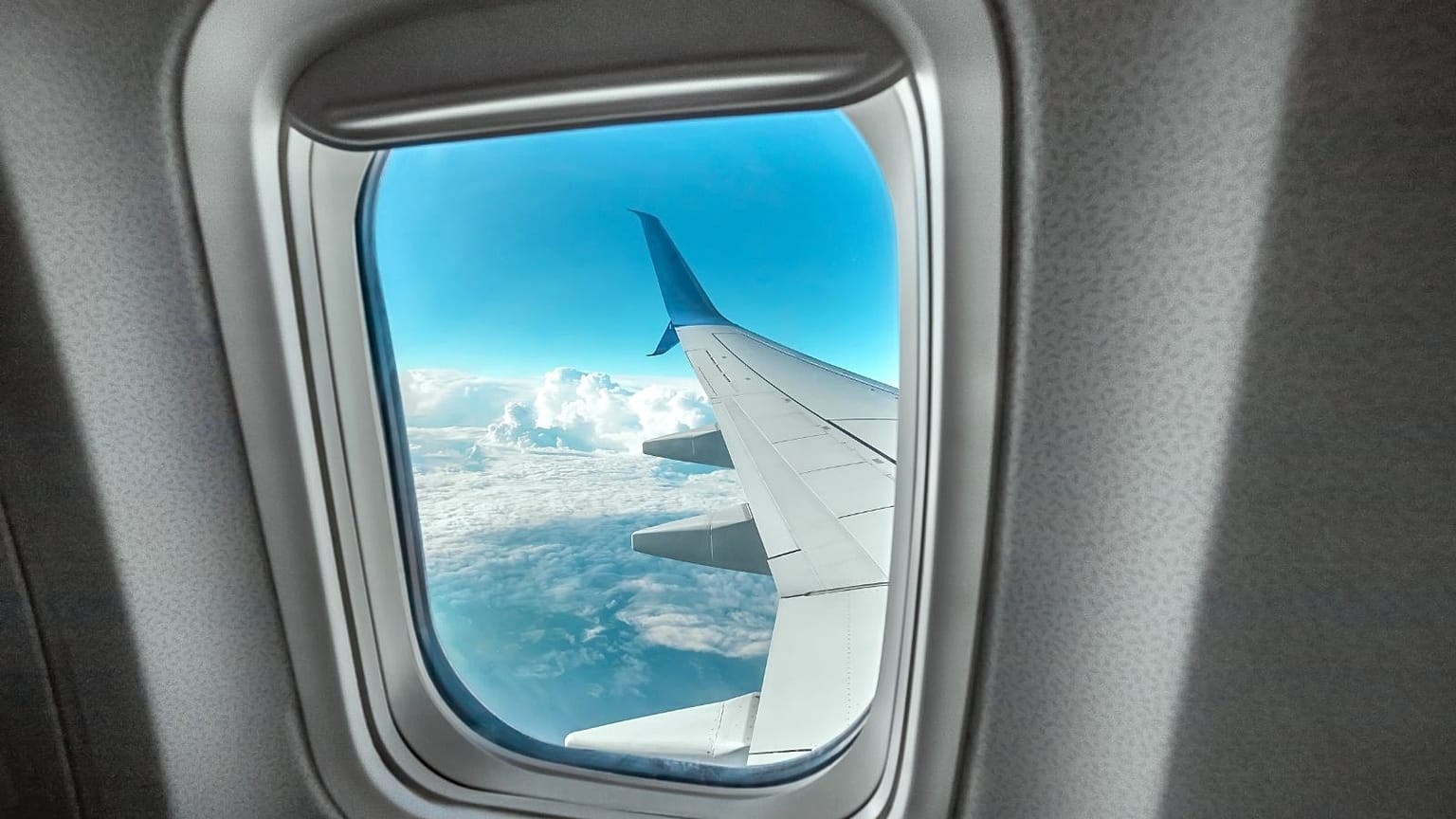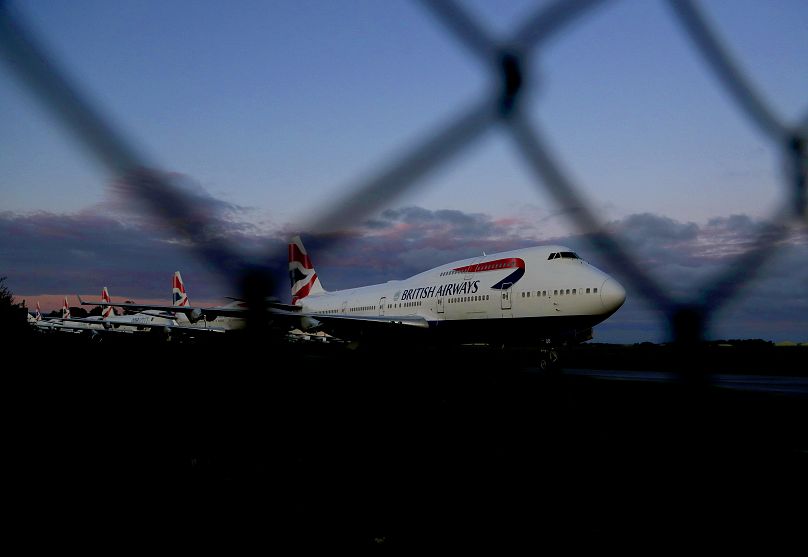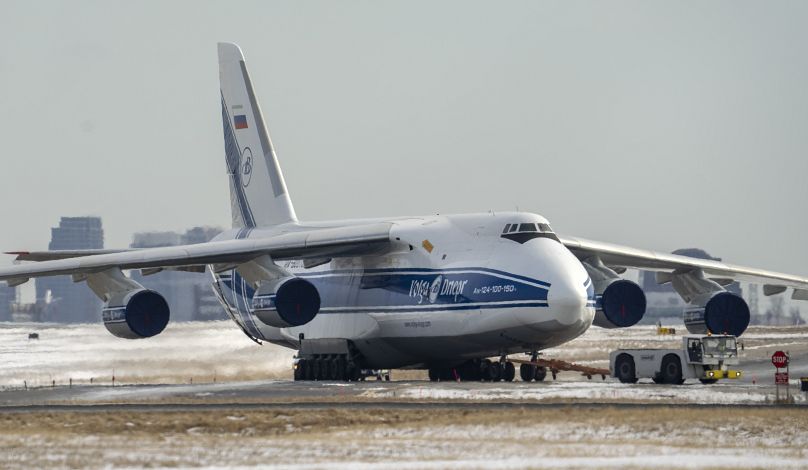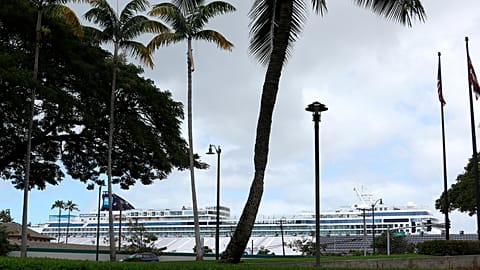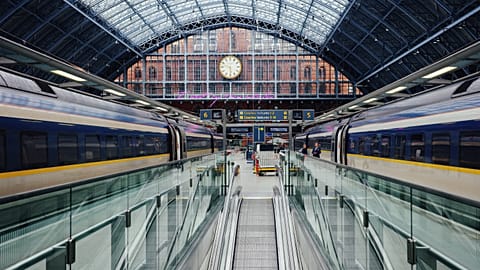Planes are having to use hours more 'fuel burn' to get to their destinations, with Finnair particularly impacted by the airspace bans.
Europe’s airspace has become a patchwork of no-go zones for Russian planes and - in retaliation - EU carriers are now banned from Russia.
Alongside the immediate aerial conflict zone around Ukraine, Moldova and Belarus, these bans are adding hours onto journey times and raising fuel costs for airlines.
Tracking apps like FlightRadar24 have made it possible for anyone to see the scattered flight paths and impractical routes that some airlines are being forced to take to get from A to B.
But as the war continues, there are a huge number of unknowns for the aviation industry. There is uncertainty around if and when passengers might start to bear the increased costs, what toll the sanctions are taking on Russia, and what the impacts on global businesses that rely on cargo flights will be.
To better understand the impact of Russia’s invasion of Ukraine and the world’s response upon air travel, we’ve been speaking to aviation experts and agencies - as well as keeping an updated list of airlines and different countries’ reactions.
How have flight paths been affected so far?
Finland’s flag carrier Finnair describes itself as “the shortcut between Europe and Asia.” But given its eastern location, that has become near impossible after Russia banned flights from the country and other EU nations over its enormous land mass.
Services to Japan, Korea and China have been cancelled as the airline evaluates alternative routes, warning of “significant financial impacts.” Finnair planes are still flying to Bangkok, Singapore, Phuket and Delhi but with an extra hour added to journey times.
In the UK, British Airways and Virgin Atlantic are two major airlines also impacted by the ban. Virgin flights that typically overfly Russia - including routes from Heathrow to Islamabad, Lahore and Delhi - now face longer flight times of anywhere from 15 to 60 minutes, the company said.
“There are typically around 90 flights a day by EU carriers overflying Russia,” says Eurocontrol, the bloc’s air traffic coordinator.
“Aircraft operators will make their own decisions on whether to continue to operate such flights,” it says. “In the event of diversion around the south of Russia, additional flight distances vary.”
A flight from Frankfurt to Beijing would need to add around 700 nautical miles (around 1,300 km) to avoid Russia’s airspace, while the route from Helsinki to Tokyo would be over 2,000 (3,700 km) nautical miles longer.
Finnair uses Airbus planes that burn through around 3,000 litres of jet fuel an hour. It’s hard to calculate the exact CO2 emissions surge as a result of the detours worldwide, but as the latest IPCC report makes clear, the climate can ill afford the extra pollution.
Will plane ticket prices rise as a result of the Russia-Ukraine crisis?
An extra hour of flight time and the fuel that would burn will add somewhere between €8,000 to €15,000 onto a journey, estimates John Gradek, an aviation expert and lecturer at Canada’s McGill University. That would work out at around €100 per seat on a full plane.
How long airlines can absorb this extra cost before passing it onto consumers is one “big unknown” of the situation, he tells Euronews Travel. If the war continues for around 30 to 60 days, Gradek predicts that carriers will introduce a fuel surcharge, as happens during times of turmoil and fuel prices rises.
Buying your ticket early could be one way to avoid this price hike. “Airlines are not able to pass on additional charges on tickets already purchased, though some may attempt to raise fares and fees on future purchases,” explains aviation analyst Robert Mann.
Could airspace sanctions put domestic Russian flights at risk?
Aeroflot, Russia’s flag carrier, is now unwelcome across Europe in all but six countries - five of which are unreachable.
The Russian Federation owns more than half of the airline, so it’s extremely unlikely to go out of business. But the country’s secondary air carrier S7 Airlines could be in danger. Gradek gives the company 45 to 60 days to go bankrupt if the conflict is prolonged.
“Two months for S7, and it’ll be a significantly shrunken Aeroflot that stays beyond that,” he says.
Aeroflot’s biggest weakness is the significant number of its airplanes that are leased. Planes can be registered in one country, and owned by a company in another country which then leases them to an airline in Russia. Looking at CH-Aviation data, Gradek estimates that just over 75 per cent, around 770 of 1000 Russian aircraft, are actually foreign-owned.
Sanctions imposed by countries from Austria to the UK suggest that all planes should be repatriated through the leasing companies.
As a result, Gradek says “the Russia commercial jet fleet will be significantly affected. Flights will be cancelled, even domestic Russian flights, because there are no longer the planes available to fly.”
He explains that this will lead to a significant reduction in commercial aviation operations within Russia’s borders.
Can Russians still fly out of the country?
Aeroflot’s struggles don’t stop Russians or other citizens in Russia from travelling in and out of the country. But, paradoxically, “if you want to go west out of Moscow you have to go east, or southeast,” says Gradek.
Russian planes can still fly to the Middle East, to Doha, or to Calcutta. The Middle East has strong economic ties to Russia so a ban on the country’s planes in its airspace is unlikely. Passengers need to take an Aeroflot flight - or Qatar, Emirates, or other airline still allowed into Russia - before transferring at a transit airport outside of the country.
From there, people can fly anywhere in the world, albeit by a more indirect route.
Will the US ban Russian planes from its airspace?
Canada banned Russian aircraft from its airspace on Sunday. "We will hold Russia accountable for its unprovoked attacks against Ukraine," transport minister Omar Alghabra said on Twitter.
Though the US has yet to follow suit, Aeroflot has cancelled flights to America due to the closure of Canadian airspace. There will be no services from Moscow to LA, Miami, New York, or Mexico, Cuba and the Dominican Republic until 2 March at the earliest, the Russian news agency Tass reported.
Some American airlines have taken action too. On Friday 25 February, Atlanta-based Delta Air Lines suspended a code-sharing partnership with Aeroflot that enabled customers to book flights on both airlines.
Gradek says there would be little impact operationally on flights between the two countries if the US did now impose a ban on Russian aircraft, and the airspace closure would be more “symbolic”.
The biggest impact could be on businesses that rely on cargo flights from Russia, including Boeing. The aerospace company relies heavily on titanium from Russia to build jet engines, while Alaska is a major hub for trans-Pacific cargo flights.















